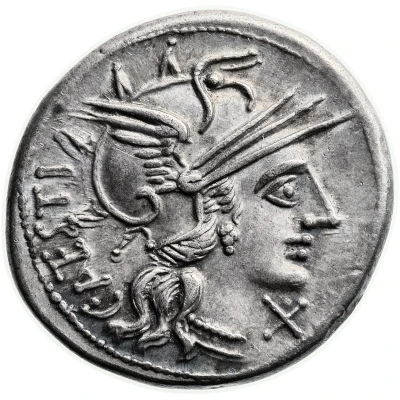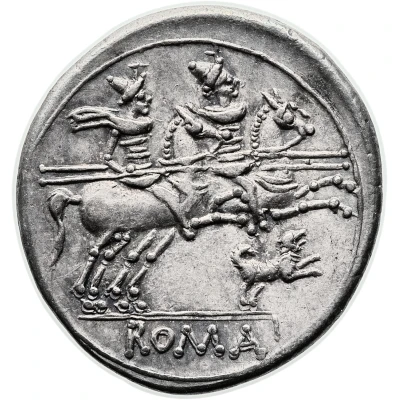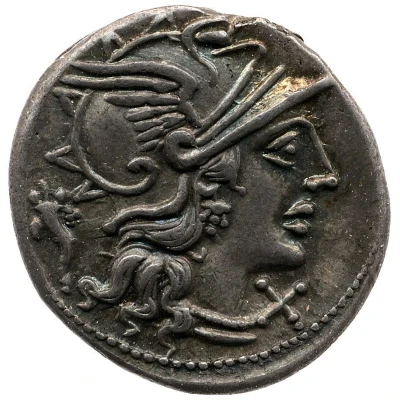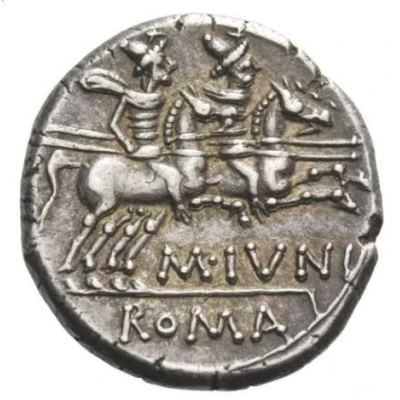


© Heritage Auctions
Denarius Antestia: Gaius Antistius; C ANTESTI / ROMA 146 BC
146 BC year| Silver | 3.44 g | 19 mm |
| Issuer | Rome › Roman Republic (509 BC - 27 BC) |
|---|---|
| Period | Republic (509 BC - 27 BC) |
| Type | Standard circulation coin |
| Year | 146 BC |
| Value | Denarius (1) |
| Currency | Denarius of 10 Asses (221 – 141 BC) |
| Composition | Silver |
| Weight | 3.44 g |
| Diameter | 19 mm |
| Thickness | 2 mm |
| Shape | Round (irregular) |
| Technique | Hammered |
| Orientation | Variable alignment ↺ |
| Demonetized | Yes |
| Updated | 2024-10-06 |
| Numista | N#49982 |
|---|---|
| Rarity index | 88% |
Reverse
Dioscuri galloping right, each holding horizontal spear; inscription in exergue.
Part of moneyer mark under the horses as a puppy running right with both fore-feet raised.
Script: Latin
Lettering: ROMA
Comment
The gens Antestia, sometimes Antistia, was a plebeian family at Rome; the name of Antestia is certainly older given the family coinage comparison and evolution. The first of the gens to achieve prominence was Sextus Antistius, tribune of the people in 422 BC.Sometimes the two parts of moneyer mark are inverted: lettering on reverse and puppy on obverse.
Interesting fact
The Denarius coin was issued during the Roman Republic, a time when Rome was still a republic and not yet an empire. The coin features the image of Gaius Antistius, who was a Roman politician and military leader. The coin's design includes the abbreviation "C ANTESTI" which stands for "Caius Antistius," and "ROMA" which represents the city of Rome. The coin was made of silver and weighed 3.44 grams. It's interesting to note that the Denarius was a widely used coin during this time period and was considered a standard unit of currency in the Roman Republic.
Price
| Date | Mintage | VG | F | VF | XF | AU | UNC |
|---|---|---|---|---|---|---|---|
| ND (-146) | - | - | - | - | - | - |
Values in the table are based on evaluations by sales realized on Internet platforms. They serve as an indication only for Denarius (Antestia: Gaius Antistius; C ANTESTI / ROMA) (146 BC) coin.



